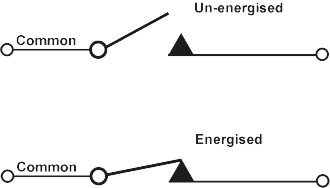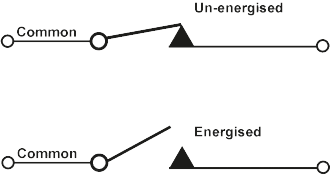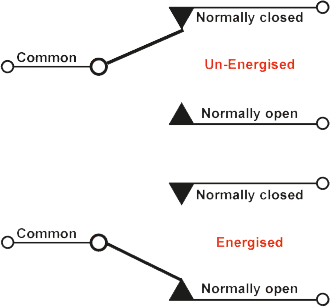Form C (Changeover - break before make)
Form C describes a relay with two contact positions, the normally
closed contact and the contact which becomes closed when the relay is
energised. For a single relay this would also be known as a changeover
switch, or a single pole double throw (SPDT). If the relay has two
contacts sets it would be described as 2 Form C contacts, or double pole
double throw (DPDT).
For Form C relays take a
look at our SIL Series 106, these relays have superb contact resistance
stability and ultra high insultation resistance, making them an ideal
choice for Automatic Test Equipment (ATE).
Form D (Changeover - make before break)
Form
D is a changeover relay that is designed to make contact with the
second contact before releasing from the first contact. These relays are
very rarely constructed from reed switches because of implementations
issues
Latching Relay
Latching relays have two
or more stable positions for the contacts when power is not applied. To
change the state of a relay a coil has a voltage transiently applied to
it with a defined duration. Latching relays can be used for applications
where minimisation of control power (coil current) is critical or where
a power failure requires the switch to be left in the state it was set
to until power is restored. The latter case needs careful design to
avoid transient change instructions as the power fails. The latching
mechanism usually relies on a magnet to provide the latching function.
Latching relays are
generally not liked in modern software controlled systems because the
software may not have direct knowledge of the relay state, particularly
at power on. Some latching relays can have extra contacts to provide a
direct indication of the contact position. This type of relay is not
commonly available in reed relay form.
Safety Relay
Also known as a force guided contact relay this type of relay is designed with two or more
contact sets (poles) and the mechanical design is such that if one
contact one pole fails to change position because of a weld the other
contact on another pole cannot close the corresponding contact. The
mechanical design usually relies on forces being applied to close to the
contacts. There are no commercial solutions for a safety relay using
reed switches.



